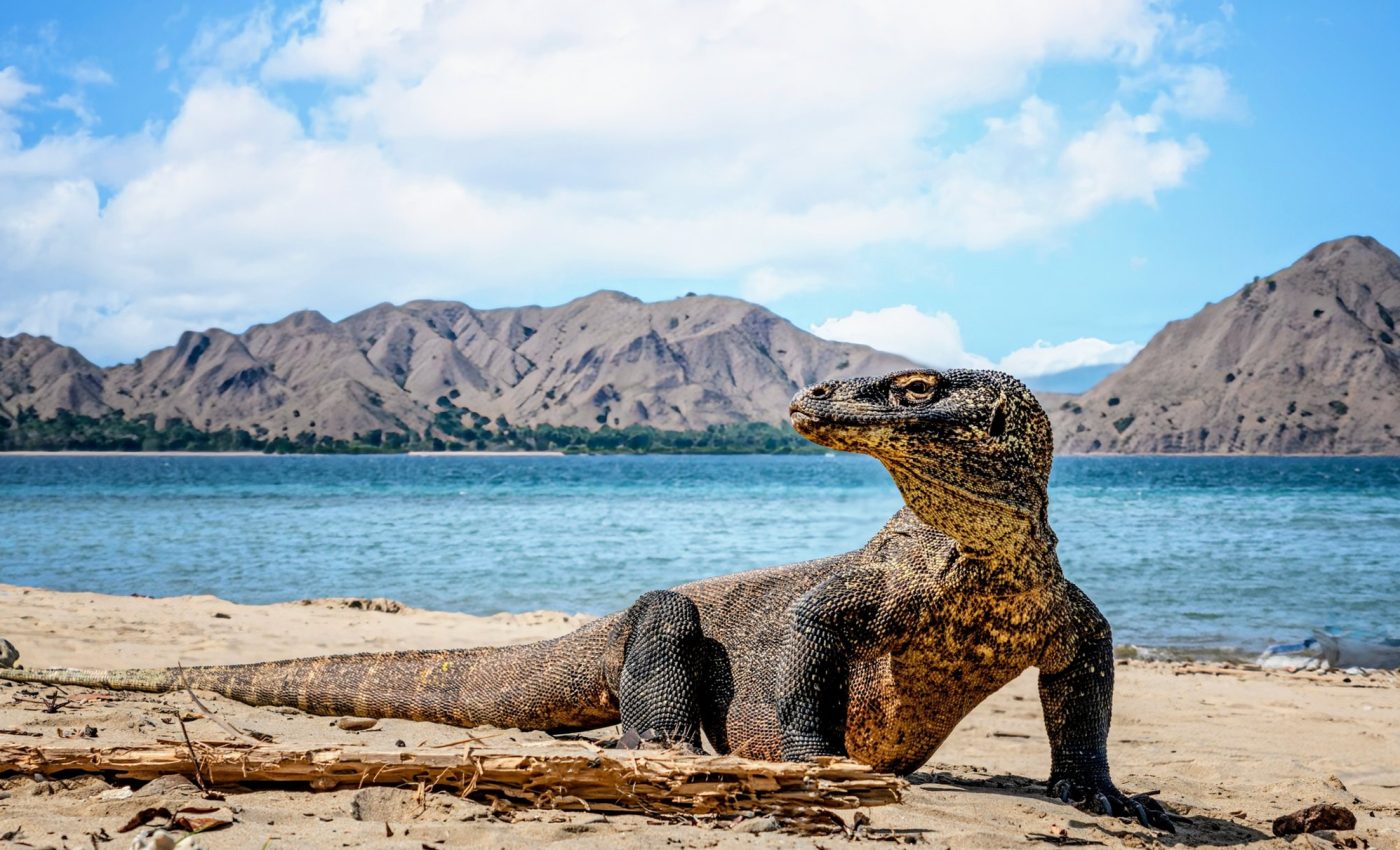
Komodo dragons have iron-tipped teeth to rip apart flesh
The world’s largest living species of monitor lizard, the formidable Komodo dragon, has recently offered science another fascinating insight into its deadly arsenal. This time, it is not inside their venomous saliva, but rather in their teeth.
Researchers from King’s College London, led by Dr. Aaron LeBlanc, have discovered that the serrated edges of Komodo dragons’ teeth are actually tipped with iron.
Komodo dragon teeth
Komodo dragons, hailing from Indonesia, are known for their predatory efficiency. They sport sharp, curved teeth that are reminiscent of many carnivorous dinosaurs and capable of tearing apart various types of meat.
Whether it’s small reptiles and birds, or larger game like deer, horses, or water buffalo, nothing stands a chance against the ferocious bite of the Komodo dragon.
The research team found that many reptiles contain iron in their teeth. Still, the Komodo dragons have managed to concentrate this iron along the cutting edges and tips of their teeth, staining them with an identifiable orange hue.
This is a stark contrast to crocodiles and other monitor lizards where the iron presence is so small, it’s virtually invisible.
Concentrated iron coating
To delve deeper into this unexpected discovery, the team collected skulls and teeth of Komodo dragons from various museums.
Also, they studied the teeth of Ganas, a 15-year-old Komodo dragon who had spent his life at ZSL conservation zoo, London Zoo. Using advanced imaging and chemical analysis, the researchers were able to understand the peculiar makeup of the lethal Komodo teeth.
They found a concentrated iron coating on top of their tooth serrations and tips. This sturdy layer keeps the teeth sharp, ready to rip flesh apart at a moment’s notice.
Meat-eating dinosaurs
The implications of this research are far-reaching. The findings open up new queries and opportunities for studying how extinct species such as dinosaurs lived and hunted.
Dr. Aaron LeBlanc, the study’s lead author and lecturer in Dental Biosciences at King’s College London, emphasized the plan to use this research to learn more about the lifestyles of carnivorous dinosaurs. However, he pointed out a crucial obstacle in their path.
According to Dr. LeBlanc, current technology is unable to identify whether fossilized dinosaur teeth contained high iron levels due to chemical alterations during the fossilization process.
What the researchers did find is that larger meat-eating dinosaurs, like tyrannosaurs, had altered the structure of their teeth.
Hence, they concluded that while Komodo dragons altered their teeth’s chemistry, some dinosaurs changed their dental enamel structure to maintain a sharp cutting edge.
The next steps
Dr. LeBlanc and his team hope that further analysis will uncover other markers in the iron coating unaffected by fossilization. Identifying these markers could confirm whether dinosaurs indeed had iron-coated teeth, dramatically enriching our understanding of these fearsome predators.
The Komodo dragon, despite its fascinating biology, faces serious threats to its survival including habitat loss, tourism, and poaching.
Conservation efforts led by organizations like the WWF focus on protecting their habitats and ensuring these ancient predators thrive through the establishment of protected areas and sustainable tourism practices.
Protecting the Komodo dragon
Educating the public about the Komodo dragon’s ecological significance and the challenges it faces is crucial for its conservation. By fostering an appreciation for these unique reptiles, communities can be encouraged to participate in protective measures and support conservation initiatives.
Schools and institutions around the world can raise awareness about biodiversity. They can implement programs that showcase its importance. Apex predators like the Komodo dragon play a critical role in maintaining healthy ecosystems. Educating others about this is essential.
Increased public engagement can lead to a collective effort to safeguard these extraordinary creatures and their habitats.
Understanding Komodo dragons
This fascinating discovery adds more depth to our understanding of these majestic creatures, aiding conservation efforts aimed at their protection.
“As the world’s largest lizards, Komodo dragons are inarguably impressive animals. Having worked with them for 12 years at London Zoo, I continue to be fascinated by them and these findings further emphasize just how incredible they are,” explained
Study co-author Dr. Benjamin Tapley is Curator of Reptiles and Amphibians at ZSL.
“Komodo dragons are sadly endangered, so in addition to strengthening our understanding of how iconic dinosaurs might have lived, this discovery also helps us build a deeper understanding of these amazing reptiles as we work to protect them,” said Dr. Tapley.
The study is published in the journal Nature Ecology & Evolution.
—–
Like what you read? Subscribe to our newsletter for engaging articles, exclusive content, and the latest updates.
Check us out on EarthSnap, a free app brought to you by Eric Ralls and Earth.com.
—–













